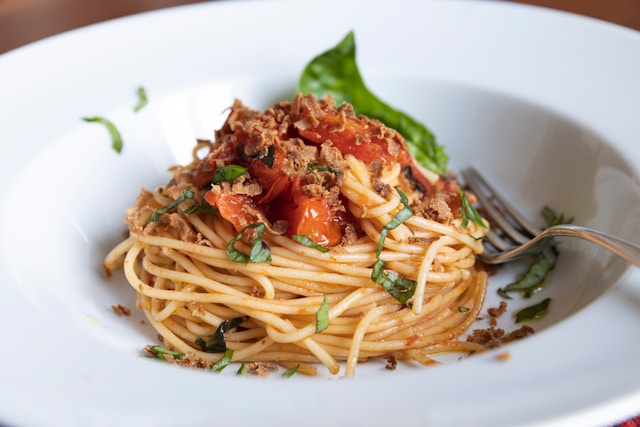Spaghetti sauce with ground beef is a staple in many households, beloved for its rich flavor, hearty texture, and versatility. This classic dish combines the savory taste of seasoned ground beef with tomatoes, herbs, and spices to create a comforting meal that’s perfect for any occasion. Whether you’re preparing a weeknight dinner or serving a crowd, this spaghetti sauce recipe is sure to satisfy.
Ingredients
To make a delicious spaghetti sauce with ground beef, you’ll need the following ingredients:
- 1 pound ground beef
- 1 medium onion, finely chopped
- 3 cloves garlic, minced
- 1 can (28 ounces) crushed tomatoes
- 1 can (15 ounces) tomato sauce
- 1 can (6 ounces) tomato paste
- 1/2 cup red wine (optional, for added depth of flavor)
- 1 teaspoon dried basil
- 1 teaspoon dried oregano
- 1/2 teaspoon dried thyme
- 1/2 teaspoon sugar (optional, to balance acidity)
- Salt and pepper, to taste
- 2 tablespoons olive oil
- 1 bay leaf
- Fresh basil or parsley, for garnish
- Cooked spaghetti, for serving
Instructions
- Cook the Ground Beef: In a large skillet or saucepan, heat the olive oil over medium heat. Add the chopped onion and cook until it becomes soft and translucent, about 5 minutes. Stir in the minced garlic and cook for another minute, until fragrant.
- Brown the Beef: Add the ground beef to the skillet. Cook it, breaking it apart with a spoon, until it’s browned all over and no longer pink. Drain off any excess fat if necessary.
- Add the Tomatoes and Seasoning: Stir in the crushed tomatoes, tomato sauce, and tomato paste, making sure everything is well combined. If you’re using red wine, add it now and let it simmer for a couple of minutes to reduce slightly. Add the dried basil, oregano, thyme, sugar, salt, and pepper. Place the bay leaf in the sauce and stir everything together.
- Simmer the Sauce: Lower the heat and let the sauce simmer gently for at least 30 minutes, stirring occasionally. The longer the sauce simmers, the richer the flavor will become. If the sauce becomes too thick, you can add a little water or broth to reach your desired consistency.
- Taste and Adjust: After simmering, taste the sauce and adjust the seasoning as needed. Remove the bay leaf before serving.
- Serve: Spoon the sauce over cooked spaghetti and garnish with fresh basil or parsley. Serve with grated Parmesan cheese and a side of garlic bread for a complete meal.
Tips for the Best Spaghetti Sauce
- Quality Ingredients: Using high-quality ground beef and canned tomatoes will make a noticeable difference in the flavor of your sauce. If possible, opt for organic or grass-fed beef and San Marzano tomatoes.
- Herb Variations: Feel free to experiment with different herbs and spices to suit your taste. Fresh herbs like basil, oregano, or thyme can be added toward the end of cooking for a burst of fresh flavor.
- Make It Your Own: This sauce is highly adaptable. You can add vegetables like bell peppers, mushrooms, or zucchini for extra nutrition and flavor. If you like a bit of heat, a pinch of red pepper flakes will do the trick.
- Storage and Freezing: Spaghetti sauce with ground beef stores well in the refrigerator for up to 3 days and can be frozen for up to 3 months. Simply reheat it on the stove before serving.
Why You’ll Love This Recipe
Spaghetti sauce with ground beef is a classic comfort food that’s easy to make and endlessly satisfying. The combination of rich tomato sauce, savory beef, and aromatic herbs creates a flavor that’s both familiar and irresistible. It’s a versatile dish that pairs perfectly with pasta, but can also be used in lasagna, baked ziti, or as a topping for stuffed peppers.
Whether you’re cooking for family, entertaining guests, or preparing meals for the week, this spaghetti sauce is a go-to recipe that never disappoints. Serve it with a side salad and a glass of red wine for a complete and comforting Italian-inspired meal. Enjoy!

